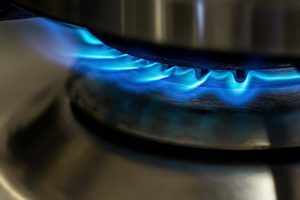Print a Sign-In Sheet | Spanish Version Coming Soon
Employees working in the restaurant, food services, and hospitality industry often use stoves, grills, and fryers regularly. Many of these employees also handle hot pots and pans, therefor, these workers are often at risk for burns. Burn injuries are very common in the food services and hospitality industry, especially for new workers that have limited experience. The foodservice industry is a very fast pasted environment and being in a rush can increase the risk of burns and other accidents and injuries.
It is the responsibility of the employer to ensure all employees have a work environment that is safe and free of hazards. Employers should provide adequate training on all tools and cooking equipment before allowing an employee to operate it. All training should be documented and kept on file. The documentation can be as simple as a sign-in sheet listing the date of training, name of equipment, name of the trainer, and signature of the trainee.
Employers should also conduct a workplace hazard assessment to determine the hazards present in the work area. Based on those hazards, appropriate personal protective equipment (PPE) should be provided and required for affected employees. The employees should be trained on how to use, put on, take off, care for, and the limitations of the PPE. PPE is an important way to prevent burns, however, employees must wear it. Some examples of PPE to prevent burns are:
- Aprons;
- Long-sleeved cotton shirts and pants;
- Potholders;
- Oven mitts; and,
- Uniforms
Here are some other helpful tips for preventing burns in the kitchen:
- Use tongs to remove hot foods.
- Use the lid as a shield when removing it from hot or boiling liquids.
- Stand to the side when removing lids from hot pots and pans.
- Allow cookers and ovens under pressure to cool before opening.
- Obtain help from a co-worker when removing a heavy pot of hot liquid from the stove.
- Wear shoes that are slip-resistant and closed-toed.
- Ease foods slowly into hot boiling water/oils.
- Ensure stoves are not over crowed.
Sources:
United States Department of Labor. Occupational Safety & Health Administration. Safety in Restaurants eTool. Retrieved from: https://www.osha.gov/SLTC/youth/restaurant/cooking_burns.html
KEMI does not assume liability for the content of information contained herein. Safety and health remain your responsibility. This information is to be used for informational purposes only and not intended to be exhaustive or a substitute for proper training, supervision or manufacturers’ instructions/recommendations. KEMI, by publication of this information, does not assume liability for damage or injury arising from reliance upon it. Compliance with this information is not a guarantee or warranty that you will be in conformity with any laws or regulations nor does it ensure the absolute safety of any person, place or object, including, but not limited to, you, your occupation, employees, customers or place of business.

